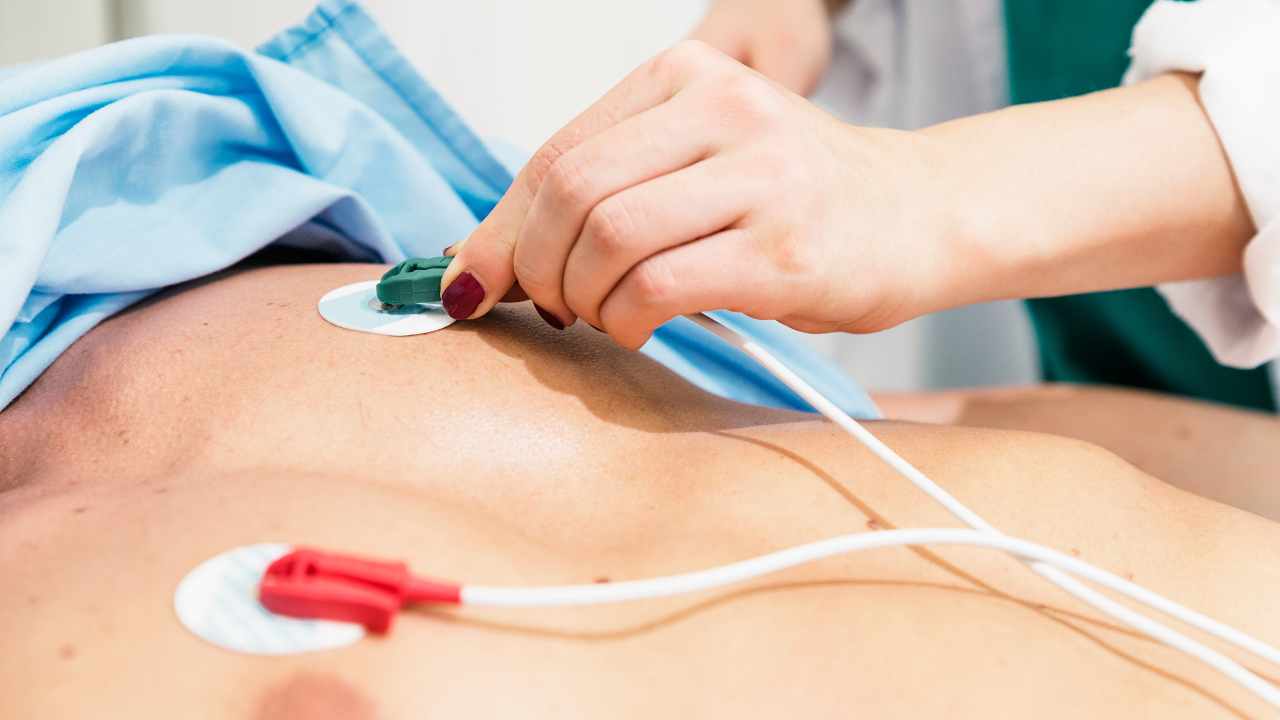ECG electrodes play a pivotal role in the accurate monitoring of cardiac activity. These are specialized sensors that detect the electrical signals generated by the heart, providing valuable insights into its functioning.
Importance of ECG Electrodes
ECG electrodes are indispensable components in electrocardiography, a fundamental diagnostic tool used by healthcare professionals worldwide. By capturing the electrical impulses of the heart, ECG electrodes enable the detection of various cardiac abnormalities, guiding clinical decision-making and facilitating timely interventions.
Types of ECG Electrodes
Disposable ECG Electrodes
Disposable electrodes offer convenience and hygiene, making them suitable for single-use applications such as emergency settings or short-term monitoring. These electrodes eliminate the need for cleaning and sterilization, streamlining the monitoring process.
Reusable ECG Electrodes
Reusable electrodes are designed for multiple applications, making them cost-effective and environmentally friendly. Typically made from durable materials, such as stainless steel or certain polymers, these electrodes can withstand repeated use without compromising signal quality.
Wet Electrodes
Wet electrodes utilize a conductive gel to establish a stable connection between the skin and the sensor. The gel helps reduce impedance, ensuring optimal signal transmission and minimizing noise interference. However, prolonged use may lead to skin irritation or discomfort.
Dry Electrodes
Dry electrodes eliminate the need for conductive gel, simplifying the electrode application process and reducing skin preparation time. These electrodes often feature innovative designs, such as microneedle arrays or specialized coatings, to enhance signal acquisition without compromising patient comfort.
Selection of ECG Electrodes
Considerations for Choosing ECG Electrodes
When selecting ECG electrodes, several factors must be taken into account to ensure optimal performance and patient comfort. These include:
- Compatibility with Equipment: Ensure that the electrodes are compatible with the electrocardiograph machine or monitoring system being used.
- Skin Sensitivity: Choose electrodes suitable for the patient’s skin type to minimize the risk of irritation or allergic reactions.
Proper Placement of ECG Electrodes
Preparing the Skin
Before applying the electrodes, the skin must be adequately prepared to ensure optimal adhesion and signal quality. Thoroughly clean the electrode placement sites to remove any dirt, oil, or residue that may interfere with conductivity.
Correct Lead Placement
Proper lead placement is essential for obtaining accurate ECG readings. Follow standardized guidelines, such as the Einthoven triangle or Mason-Likar placement, to ensure consistent and reliable electrode positioning across different leads.
Ensuring Adherence
To prevent electrode detachment during monitoring, ensure that the skin is dry and free from any lotions or oils. Use adhesive patches or securement devices, if necessary, to reinforce electrode adhesion and minimize motion artifacts.
Care and Maintenance of ECG Electrodes
Cleaning and Sterilization
Reusable electrodes should be cleaned and sterilized according to manufacturer recommendations to prevent cross-contamination and ensure patient safety. Use mild detergents and disinfectants suitable for medical devices, and avoid abrasive cleaning methods that may damage the electrodes.
Storage Tips
Proper storage is essential to preserve the integrity and longevity of ECG electrodes. Store disposable electrodes in a cool, dry place away from direct sunlight, moisture, or heat sources. Reusable electrodes should be stored in designated containers or pouches to prevent damage or contamination.
Monitoring Electrode Integrity
Regularly inspect ECG electrodes for signs of wear, damage, or degradation. Replace electrodes that show visible defects or exhibit poor signal quality to maintain the accuracy and reliability of cardiac monitoring.
Common Issues with ECG Electrodes
Artifact Interference
Electrode artifacts, such as muscle noise, baseline drift, or electrode polarization, can distort ECG waveforms and compromise diagnostic accuracy. Minimize artifact interference by ensuring proper skin preparation, electrode placement, and equipment calibration.
Skin Irritation
Some patients may experience skin irritation or allergic reactions in response to electrode materials or adhesive components. Use hypoallergenic electrodes or alternative placement strategies to mitigate skin sensitivity issues and enhance patient comfort.
Electrode Detachment
Poor electrode adhesion or inadequate skin preparation can lead to electrode detachment during monitoring, resulting in signal loss and data inaccuracies. Take precautions to secure electrodes firmly and monitor for signs of detachment throughout the recording session.
Signal Quality Degradation
Environmental factors, such as sweat, movement artifacts, or electromagnetic interference, can degrade signal quality and impair ECG interpretation. Minimize signal disturbances by optimizing electrode placement, reducing patient movement, and shielding the monitoring environment from external sources of interference.
Advancements in ECG Electrodes
Nanotechnology
Recent advancements in nanotechnology have led to the development of nanostructured materials and coatings for ECG electrodes. These nano-enhanced electrodes offer superior conductivity, biocompatibility, and durability, improving signal acquisition and enhancing patient comfort.
Wireless Connectivity
Wireless ECG electrodes enable remote monitoring and real-time data transmission, revolutionizing cardiac telemetry and ambulatory monitoring applications. By eliminating cumbersome cables and physical constraints, wireless electrodes offer greater flexibility and convenience for both patients and healthcare providers.
Comfort-enhancing Materials
Innovative electrode designs incorporate soft, flexible materials and ergonomic features to enhance patient comfort during prolonged monitoring periods. Breathable fabrics, skin-friendly adhesives, and hypoallergenic coatings minimize skin irritation and maximize wearer satisfaction.
Future Trends in ECG Electrodes
Miniaturization
Advances in microfabrication techniques and sensor technology are driving the miniaturization of ECG electrodes. Miniature electrodes offer improved comfort, discretion, and mobility, opening up new possibilities for continuous monitoring in diverse clinical and consumer settings.
Personalization
Emerging trends in personalized medicine emphasize the customization of healthcare interventions based on individual patient characteristics and preferences. Future ECG electrodes may incorporate personalized features, such as adjustable sizing, tailored adhesives, or patient-specific materials, to optimize comfort and performance for each user.
Integration with Wearable Technology
The integration of ECG electrodes into wearable devices, such as smartwatches, fitness trackers, or medical-grade wearables, holds immense potential for remote health monitoring and preventive care. By seamlessly integrating cardiac monitoring capabilities into everyday accessories, wearable ECG electrodes empower users to track their heart health proactively and seek timely medical attention when necessary.
Conclusion
In conclusion, ECG electrodes play a critical role in cardiac monitoring, facilitating the detection and diagnosis of various cardiovascular conditions. By understanding the different types of electrodes, proper placement techniques, and strategies for maintenance and troubleshooting, healthcare professionals can optimize the quality and reliability of ECG recordings, ensuring accurate diagnostic insights and better patient outcomes.




